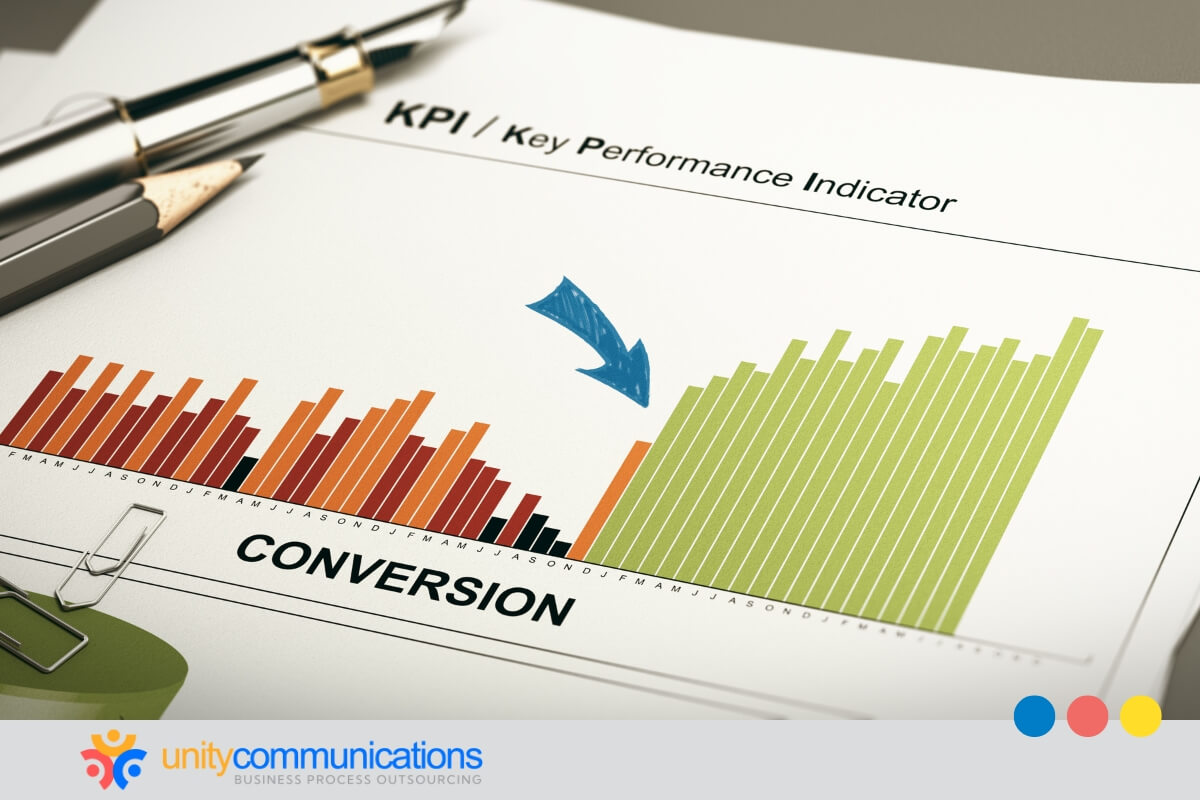Table of Contents
Understanding user intent is the cornerstone of successful SEO strategies. Businesses that can align content with what users are searching for can better enhance engagement, boost rankings, and drive conversions.
Achieving this requires more than guesswork. It demands an in-depth analysis of search behavior, a nuanced understanding of user needs, and the ability to craft content that resonates with target audiences. This is where business process outsourcing (BPO) for analyzing user intent in SEO comes into play.
Keep reading to learn how BPO services empower brands to understand what the audience wants and deliver it effectively, paving the way for measurable SEO success.
Role of BPO in Analyzing User Intent for SEO

User intent in SEO refers to the purpose behind a user’s search query—whether they seek information, want to navigate to a specific site, or are ready to purchase. Understanding user intent is crucial because search engines prioritize delivering results that closely align with what users want.
Analyzing user intent comes with challenges. Accurately determining intent requires examining search patterns, interpreting ambiguous queries, and updating strategies to align with changing consumer behavior.
For instance, voice search and mobile-first interactions dominate, with mobile devices accounting for 61.6% of global website traffic. Businesses often struggle to process and apply this data efficiently, leading to missed opportunities in optimizing content.
What is BPO’s role in addressing these challenges? BPO firms can help by leveraging data analysis and customer insights expertise to interpret user behavior, optimize content for specific intents, and monitor evolving trends. Here’s how BPO provides support for analyzing user intent in SEO:
Analyzing search queries to understand intent
BPO services for analyzing user intent in SEO leverage advanced tools to collect and analyze search queries to deepen understanding of user intent. They gather extensive data through keyword research platforms. This data provides insights into frequently searched terms, variations, and associated long-tail keywords, helping to categorize queries based on intent.
BPO services also examine search patterns to identify user behavior trends. This involves exploring click-through rates (CTR), bounce rates, and session durations to gauge how well content aligns with user expectations.
Tools such as heatmaps and Google Analytics help track user engagement and pinpoint intent-driven behavior. For example, high engagement with product pages might indicate transactional intent, while frequent visits to blog posts suggest users want to find certain information.
BPO vendors use natural language processing (NLP) and machine learning (ML) algorithms to refine this understanding. These technologies interpret the context and semantics of queries, especially for complex or ambiguous searches. For instance, a query such as “best smartphones” could signal commercial intent, requiring content optimization for comparisons and reviews.
By systematically collecting and analyzing search data, BPO providers help businesses align content strategies with user intent. This leads to improved search engine rankings, higher engagement, and better conversion rates.
Differentiating informational, navigational, and transactional intent
BPO services for analyzing user intent in SEO differentiate intent by examining search queries’ context, structure, and phrasing. They employ keyword analysis, user behavior tracking, and advanced tools to categorize searches into informational, navigational, transactional, and commercial intent.
About 99% of search queries fall into four primary intent categories: informational, navigational, transactional, and commercial. Understanding user intents is key to creating content that aligns with user needs.
Here are strategies BPO providers employ to differentiate intent:
- Informational intent: Users typically seek informational content, answers, or explanations. Queries include “what,” “how,” or “why,” signaling a desire to learn rather than act. BPO providers identify this intent by analyzing search trends and prioritizing content such as blog posts, tutorials, or FAQ sections that address these inquiries.
- Navigational: Users aim to find a specific website or page. Navigational queries often include search terms, brand names, or direct phrases, such as “Twitter login” or “Apple website.” BPO teams differentiate this intent by monitoring branded keyword searches and ensuring content visibility for navigational queries.
- Transactional: Users are ready to take a specific action, such as purchasing or booking a service. Keywords such as “buy,” “order,” or “subscribe” indicate this intent. BPO providers optimize product pages, ensure seamless user experiences, and create clear calls to action to capture these searches.
- Commercial investigation: This reflects users in the research phase before a purchase. Queries such as “best laptops under $1000” or “product reviews” show a need for comparisons or detailed information. BPO providers optimize content with reviews, ratings, and comparison charts to address this intent effectively.
By recognizing and addressing these intent types, businesses can create targeted content that meets audience expectations and improves engagement. Combining keyword analysis, user behavior metrics, and content optimization allows BPO providers to tailor strategies for clients to meet diverse user intents, driving engagement and conversions.
Optimizing content to match user expectation
BPO services for analyzing user intent in SEO leverage data-driven insights to optimize content. They evaluate search queries, behavior, and engagement metrics to understand user needs and identify gaps in existing content.
- For informational intent, BPO teams create detailed and well-structured content such as how-to guides, blog posts, and infographics that answer common questions. They ensure this content is easily scannable and includes targeted keywords to rank well for queries aimed at learning or problem-solving.
- To address navigational intent, BPO providers optimize landing pages, ensuring that users looking for specific brands or services find accurate and direct results. This might involve improving meta tags, developing clear navigation, and enhancing site performance to meet expectations.
- For transactional intent, the focus shifts to creating compelling product descriptions, enhancing e-commerce pages, and integrating persuasive elements such as calls to action, reviews, and trust signals. BPO teams design a seamless checkout process to encourage conversions.
- In addressing commercial intent, they optimize content with comparison tables, customer reviews, and detailed product/service analyses. This approach helps users in the research phase make informed decisions, increasing the likelihood of future transactions.
By continuously analyzing performance metrics and adapting content strategies to reflect evolving search behaviors, BPO services ensure that businesses meet user expectations and enhance engagement and conversion rates.
This tailored approach improves search engine rankings and user satisfaction, driving long-term SEO success.
Tracking performance improvements through user-focused metrics
BPO services for analyzing user intent in SEO track performance improvements using analytical tools, key performance indicators (KPIs), and continuous monitoring strategies.
They begin by setting clear benchmarks based on baseline metrics such as search rankings, click-through rates (CTR), bounce rates, and conversion rates. They then monitor how optimized content performs over time, identifying areas of improvement and success. To evaluate how well content aligns with user intent, BPO teams analyze metrics such as:
- Average session duration
- Time on page
- Percentage of returning visitors
For example, an increase in these metrics for blog content indicates that informational intent is being effectively addressed. Similarly, for transactional intent, higher conversion rates and reduced cart abandonment suggest improved alignment with user needs.
Another critical aspect of tracking involves keyword performance. BPO providers assess whether target keywords rank higher in search engine results pages (SERPs) and if they attract relevant traffic. They also use heat maps and session replay tools to understand user navigation behavior and keep content structures and calls to action engaging and effective.
Periodic reporting is also crucial. BPO for analyzing user intent in SEO generates detailed reports showcasing the impact of optimizations, comparing results to initial benchmarks. These insights enable businesses to refine strategies continually and respond to evolving user behaviors for sustained SEO success.
Providing real-time intent adjustments
BPO services for analyzing user intent in SEO enable real-time adjustments by continuously monitoring search trends, user behaviors, and engagement metrics. Using advanced tools such as Google Analytics, heatmaps, and artificial intelligence (AI)-powered algorithms, they track how users interact with content and identify shifts in intent patterns.
For example, a sudden increase in queries for “best holiday deals” might indicate emerging commercial intent, prompting BPO teams to optimize landing pages with seasonal offers or discounts.
To implement these adjustments effectively, BPO firms use automation tools and data pipelines that allow for rapid updates to keywords, meta tags, and content strategies. They also employ dynamic content management systems that enable swift edits to align with evolving user needs.
This approach ensures that businesses remain competitive by addressing real-time changes, such as spikes in transactional intent during sales events or shifts toward informational intent when new trends emerge.
Additionally, BPO teams provide detailed, ongoing reports that highlight the impact of these adjustments, allowing businesses to measure improvements in engagement and conversions. This ability to adapt in real time ensures that SEO efforts remain relevant, driving better user satisfaction and sustained search engine visibility.
Benefits of leveraging BPO for analyzing user intent in SEO

BPO for analyzing user intent in SEO offers businesses several key benefits, enabling them to optimize their digital strategies effectively.
Here are the key BPO advantages:
Enhanced user engagement with intent-aligned strategies
BPO providers allow businesses to improve user engagement by aligning content strategies with user intent. By leveraging insights from search queries, behavior tracking, and performance metrics, BPO services can create content that addresses users’ needs and expectations at various journey stages.
For example, users with informational intent might respond positively to how-to guides and blog posts, while users with transactional intent expect product pages with clear calls to action and detailed reviews.
These intent-aligned strategies improve user experience, increase dwell time, and reduce bounce rates as users find content satisfying their needs.
Cost-effective expertise
Hiring an in-house team that analyzes user intent and implements SEO strategies can be expensive and time-consuming. BPO is a cost-effective alternative that provides specialized expertise without requiring businesses to invest in hiring, training, and maintaining full-time personnel, saving up to 70% in labor costs.
With BPO providers, companies can access a pool of experienced SEO specialists skilled in data analysis, trend monitoring, and content optimization. This approach allows organizations to pay only for the services needed and scale as demand fluctuates without incurring fixed overhead costs.
Moreover, outsourcing enables small- to medium-sized businesses to access the same expertise that large enterprises utilize, leveling the playing field in competitive SEO landscapes.
Higher conversion
By analyzing user intent and optimizing content accordingly, BPO providers help businesses improve conversion rates. They identify users’ needs—whether researching, comparing, or ready to purchase—and align website content, landing pages, and user journeys with these behaviors.
For instance, a user with transactional intent responding to a well-optimized product page with compelling calls to action is much more likely to convert than one faced with irrelevant or poorly structured content.
Data-driven decision-making
BPO providers utilize advanced analytics and reporting to support businesses with data-driven decision-making. With access to KPIs, they provide insights into what strategies are working and where adjustments are necessary.
This approach enables businesses to pivot strategies quickly, refine content, and allocate resources effectively based on user behavior and performance trends. Doing so allows businesses to make strategic changes rather than relying on guesswork. Decision-making informed by accurate and timely data reduces risks and enhances ROI in SEO campaigns.
Access to tools and professional expertise
BPO services for analyzing user intent invest in the latest SEO and data analysis tools and technologies, which can be prohibitively expensive for individual businesses to acquire. This is why 49% of companies outsource to get access to new capabilities.
BPO firms use keyword research platforms, competitive analysis software, and AI-driven trend monitoring tools. Examples include Semrush, Google Search Console, and Ahrefs.
Through BPO partnerships, businesses gain access to these advanced tools and the expertise of experienced SEO specialists who can use them effectively. This allows for comprehensive competitor analysis, real-time search pattern tracking, and content optimization tailored to user intent.
This synergy of tools and expert knowledge allows businesses to streamline their SEO strategies and maintain a competitive advantage.
The bottom line

Understanding user intent is essential for any effective SEO strategy, as it helps align content with the specific needs and expectations of the target audience.
With BPO services for analyzing user intent in SEO, businesses can enhance user engagement, achieve higher conversion rates, and remain competitive in the ever-changing digital landscape. They can focus on core competencies while ensuring SEO strategies are effective, agile, and tailored to users’ needs.
Ready to optimize your content to the specific needs of your users? Let’s connect!




